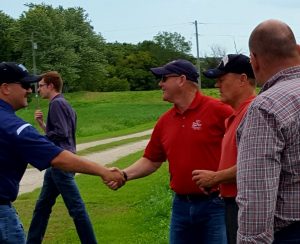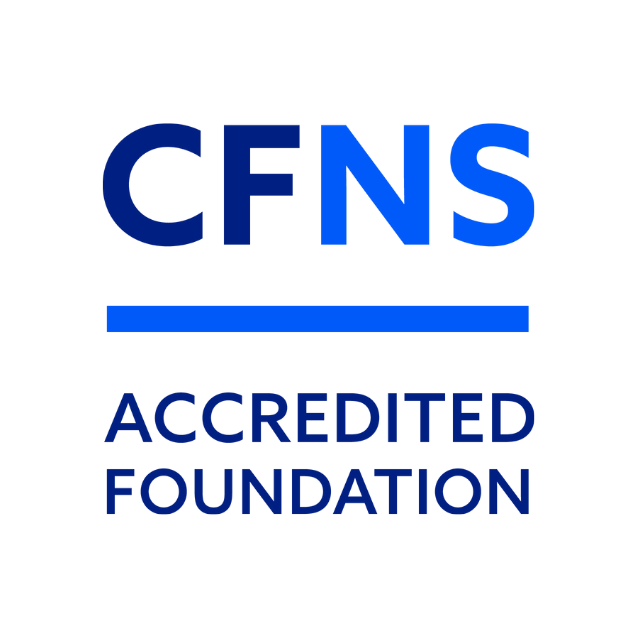Study area at center of $1 billion issue
Little rivulets of rain water cut through clay soil and carry with them phosphorous on the way into the lower Fox River. It’s a big problem.
Water pollution, algae blooms, fish die-offs all can result from fertilizer that should be on the farm fields ending up in the river. Additional federal regulations are on the way, and conservation professionals estimate that meeting them for the Lower Fox River will be a $1 billion problem.

Reid Ribble greets people who joined his Save the Bay tour on Sept. 19.
A motor coach carrying 40 farmers, implement salesmen, government employees and academics weaves through the country roads of Brown and Outagamie counties. It was arranged by outgoing U.S. Rep. Reid Ribble, his annual “Save the Bay” tour. The route includes the Plum and Kankapot Creek sub-watershed near Kaukauna, the greatest source of phosphorus runoff on the Lower Fox and the object of a Community Foundation Environmental Stewardship grant to assist in studying what works to reduce runoff.
Some of the approaches on display:
- A variety of cover crops including barley, kale and radishes. (The vegetables aren’t harvested, but they draw nutrients up to the depth of shallower crop roots and condition the soil as they decompose.)
- Cover crops seeded by airplane through the standing corn.
- No-till planting with seed inserted into the soil rather than the soil turned over with plows.
- Seeding a cover crop while harvesting corn using a spray seeder purchased by the Nature Conservancy.
- Edge-of-field runoff monitors giving researchers a more educated picture of how much runoff, soil particulate and phosphorus are leaving a field in a rainstorm.
Farmers are volunteering their fields for the experiments, betting their livelihood on finding a better way to keep expensive fertilizers on their fields and the waterways they fish and the well water they drink more pure.
Ribble vows to continue to work on his Save the Bay campaign after he leaves office in January. The Foundation will continue to explore how its grant-making can lend a hand.



Leave a Comment